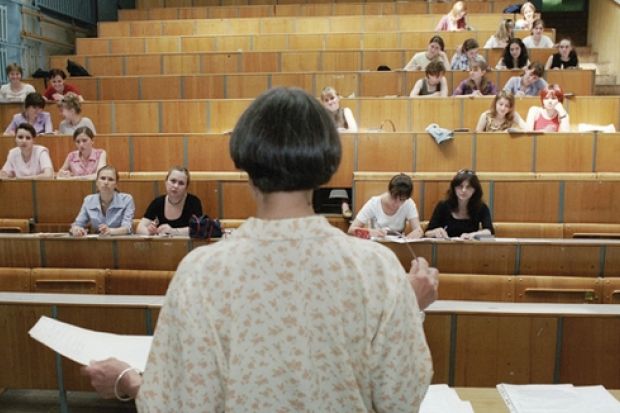More than half of English universities are expecting a fall in undergraduate numbers in the first year of higher fees, with the sector as a whole planning for a drop of almost 2 per cent.
The predictions come in a report from the Higher Education Funding Council for England, considered at a board meeting on 7 July, which collates information from financial forecasts submitted by universities earlier this year.
The analysis shows that 56 per cent of institutions are expecting home and European Union full-time undergraduate numbers to fall in 2012-13, with one institution predicting its numbers will fall by 20 per cent, and five others by more than 10 per cent.
A further 20 per cent of institutions are forecasting no change in student numbers while 24 per cent believe they will see an increase.
Postgraduate student numbers, meanwhile, are expected to increase marginally over the period to 2013-14, rising between 0.6 and 1.5 per cent per year, whereas overseas places are expected to go up by between 3 and 6 per cent annually.
Part-time undergraduate numbers are forecast to rise in 2011-12 by 2.1 per cent but fall back slightly after that.
Despite the predictions about full-time undergraduates, the report concludes that the sector will be in a "financially sustainable position" in the medium term, but warns that "some institutions will need to generate better financial results in the longer term".
"The sector continues to operate on very fine margins which mean that small changes can have a material impact on the financial performance of the sector," it says, adding that the "main financial strength" remained in a small number of institutions.
According to the report, the sector is expecting surpluses to drop significantly in 2011-12 - the year before universities can begin to replace lost income through fees - with a sector-wide average of just 1 per cent being forecast.
But universities are predicting that after that, surpluses will return to nearer 2 per cent on average, helped by a projected rise in full-time fee income, along with a 28 per cent real-terms increase in money from part-time students, 16 per cent from postgraduates and per cent from overseas students.
Some universities predict large increases in income from overseas students in their forecasts, which may have been formulated before the full details of the government's new student visa policy - announced in March - were known.
A total of 12 institutions predict that income from overseas fees will shoot up by more than 100 per cent in real terms from 2009-10 to 2013-14 - with three forecasting a rise of more than 200 per cent.
Meanwhile, the report also reveals that universities expect staff costs, including pensions, to see a real-terms fall over the next three years because of smaller pay rises and a slight drop in numbers.
Hefce warns that the plans for staff costs "may be challenging" given that until last year - when staff costs began to be contained - the average annual cash increase since 2001-02 had been 7.4 per cent.
Register to continue
Why register?
- Registration is free and only takes a moment
- Once registered, you can read 3 articles a month
- Sign up for our newsletter
Subscribe
Or subscribe for unlimited access to:
- Unlimited access to news, views, insights & reviews
- Digital editions
- Digital access to THE’s university and college rankings analysis
Already registered or a current subscriber? Login
